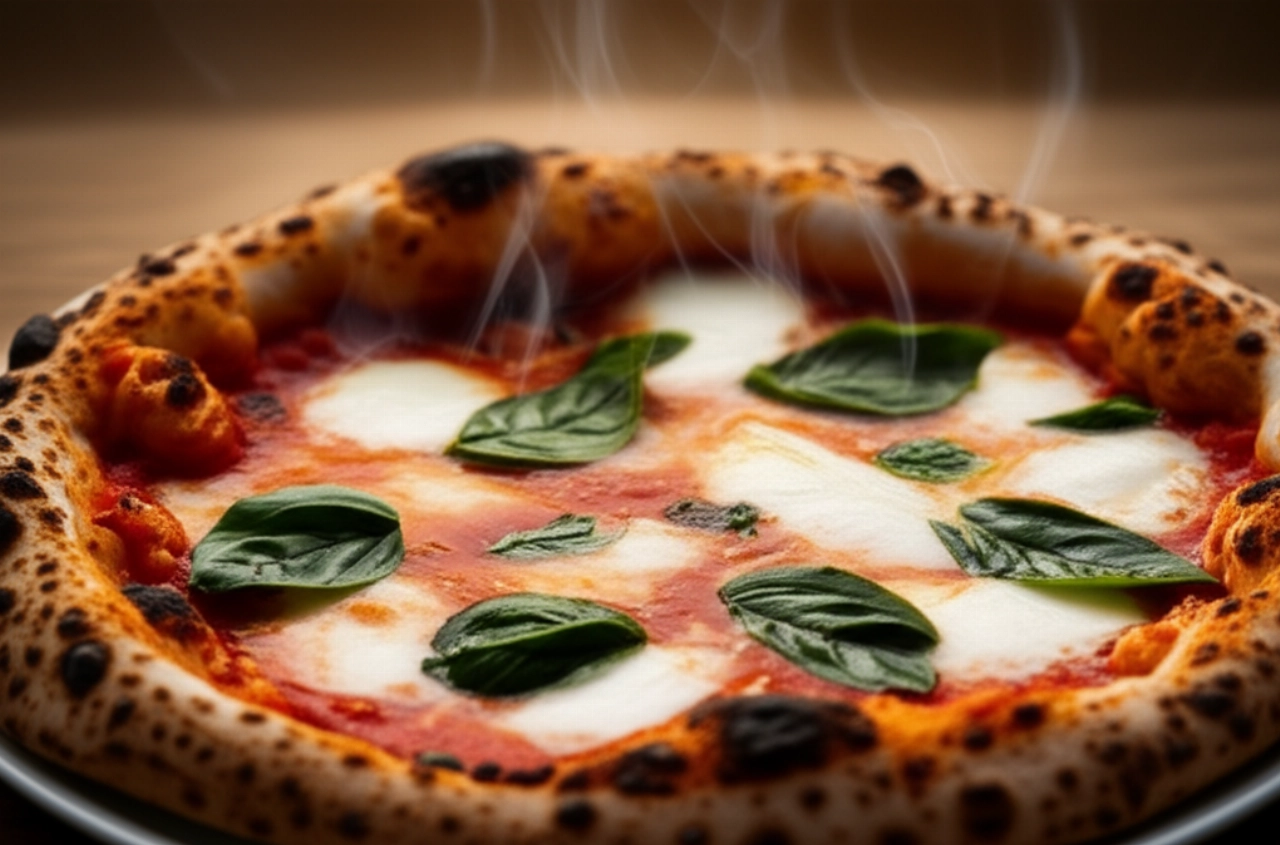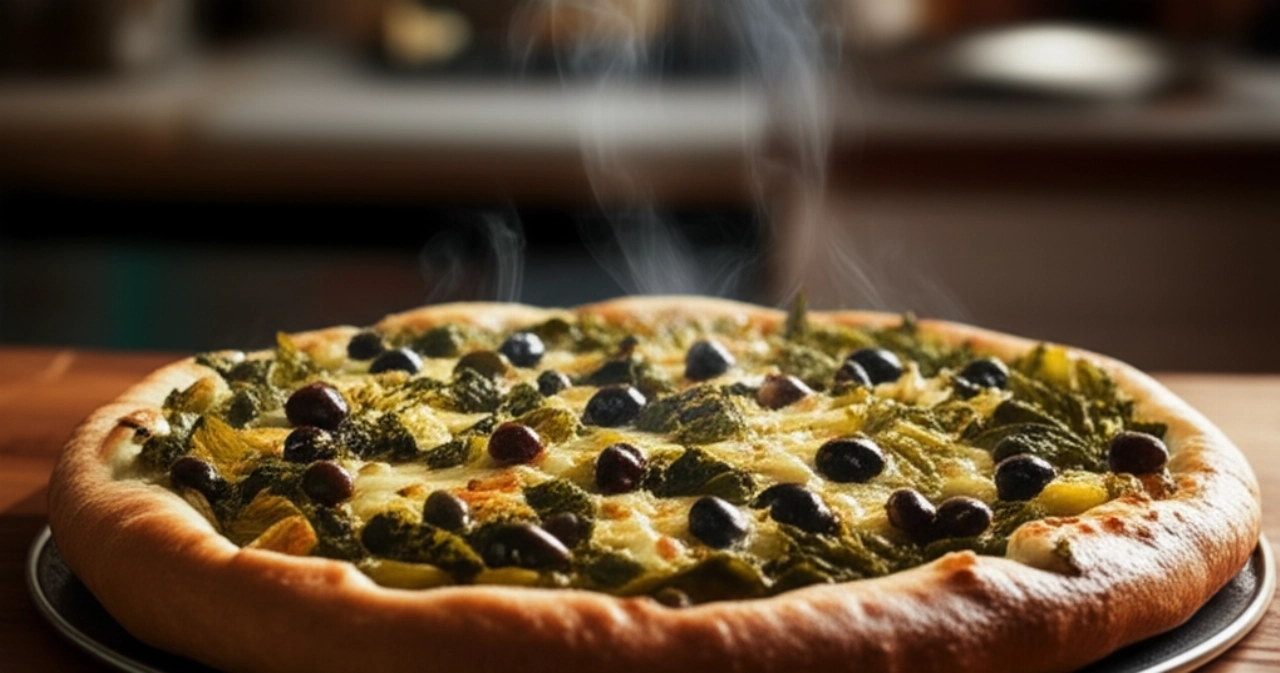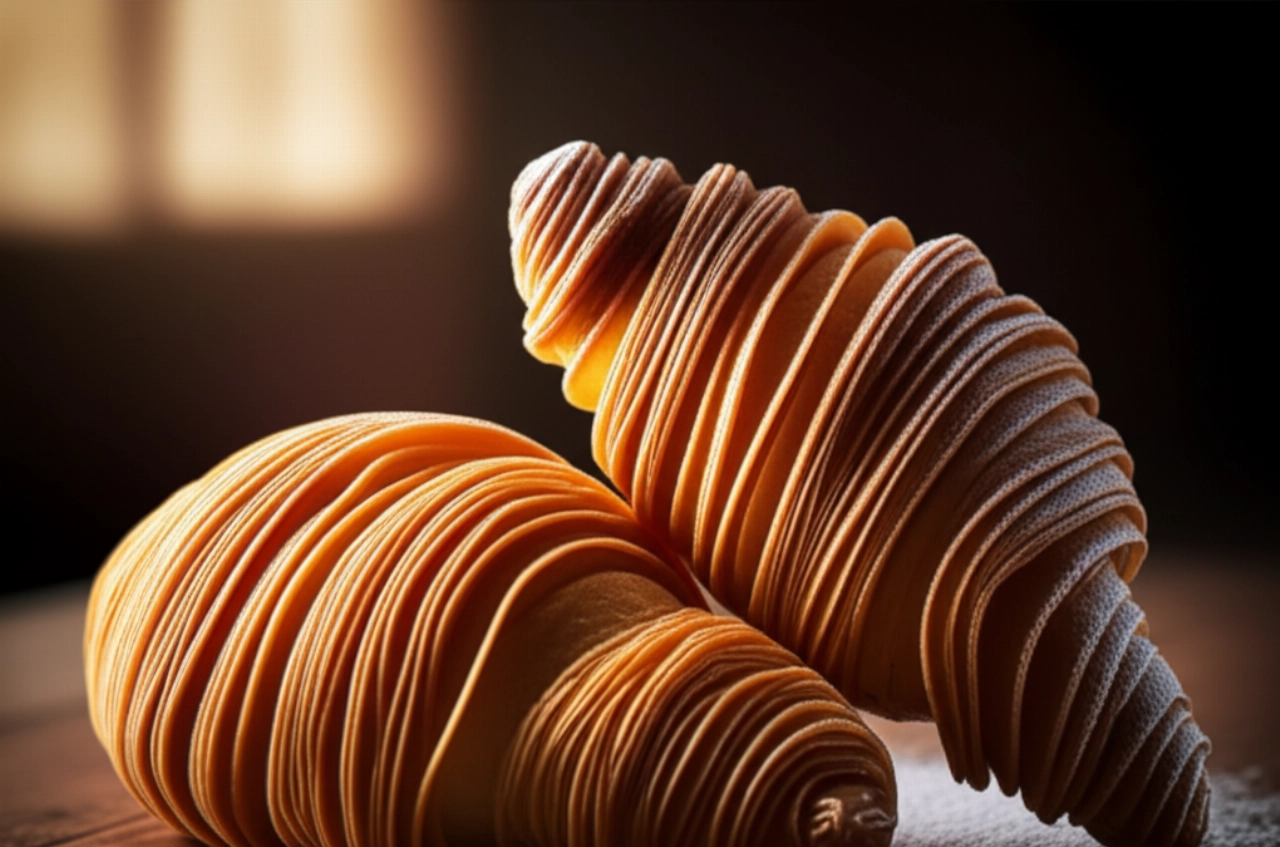Do you dream of biting into a cloud of golden dough, crispy on the outside and incredibly soft on the inside, with that unmistakable aroma of fresh tomato and basil that transports you directly to the alleys of Naples? Fried Montanara is not just a pizza; it's an experience, a piece of Neapolitan street food history that tastes of celebration and authenticity.
Too often, however, fried pizza can turn out greasy, heavy, or worse, rubbery. Finding the authentic recipe, one that makes you feel at home and guarantees a light and fragrant result, seems almost impossible, amidst a thousand versions and conflicting advice.
Make yourself comfortable, because today I'm opening the doors of my kitchen and revealing all the secrets to preparing the perfect fried Montanara. Not just a list of ingredients, but a true step-by-step guide, full of tricks and practical tips, for a light, fragrant, and unforgettable result. Success is guaranteed, and I assure you that after trying it, you won't look for another recipe. Here you'll feel at home, just like at grandma's!
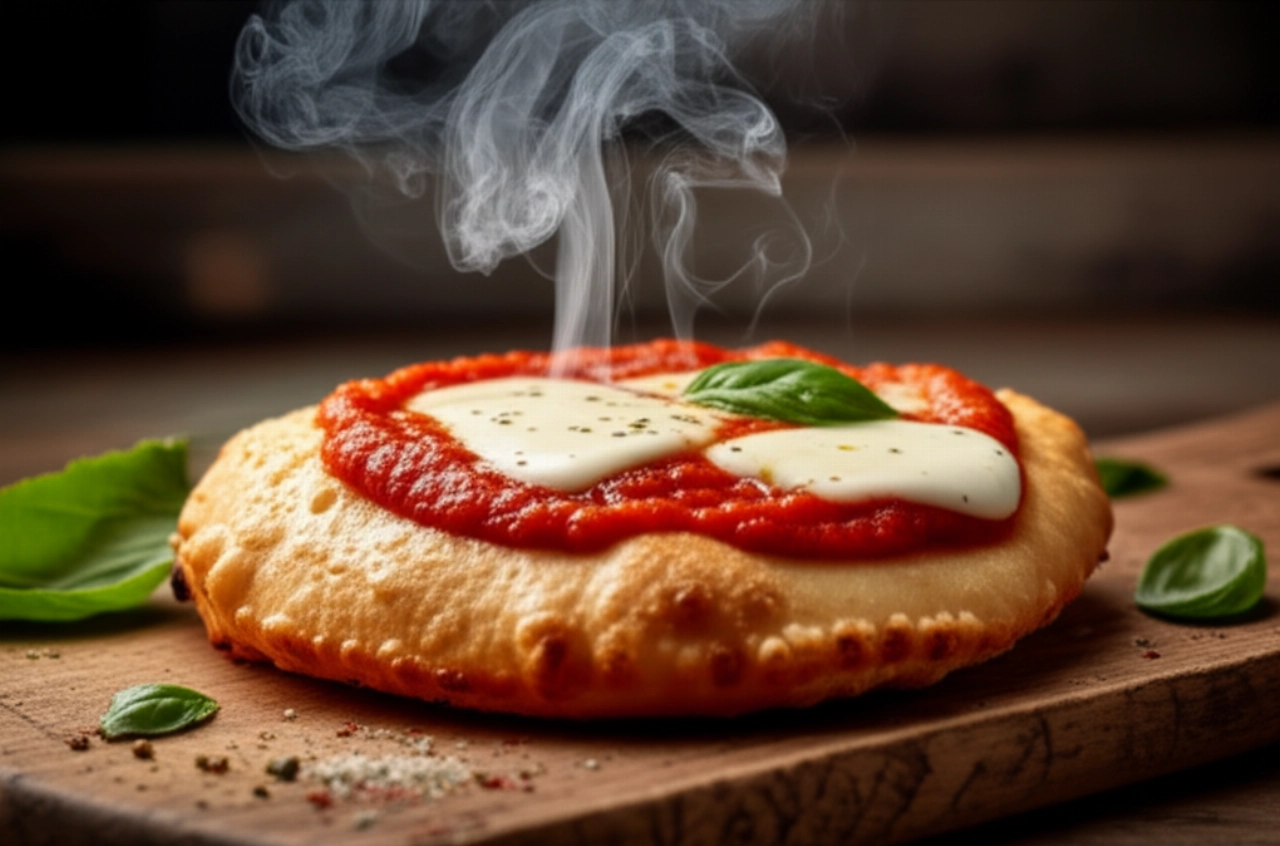
Ingredients for a Perfect Montanara: The Choice That Makes the Difference
The true magic of Montanara begins with the ingredients. It's not just about quantity, but about quality and understanding the role of each. Here's what you need for a dream dough and a topping that sings:
- Flour: For Montanara, I recommend a "00" or "0" type flour with medium strength (W 220-280). This will ensure an elastic dough and good leavening, essential for the final lightness.
- Water: The water should be at room temperature, or slightly lukewarm (about 20-22°C). It is the vehicle that activates the yeast and hydrates the flour, creating the gluten network. Do not use it cold from the fridge, as it would slow down the leavening too much.
- Fresh brewer's yeast: Always choose fresh, block yeast. It has greater strength and a more intense aroma than dry yeast. Remember that it is a living organism: treat it with care!
- Salt: Don't underestimate salt! It not only gives flavor to the dough but also regulates yeast activity and strengthens the gluten structure. Always add it last, away from the yeast, to avoid inhibiting its action.
- Extra virgin olive oil (for the dough): A drizzle in the dough makes it softer, more elastic, and easier to work with, in addition to imparting a delicate aroma.
- Peanut oil (for frying): This is your ally for impeccable frying. It has a high smoke point, which means it withstands high temperatures well without burning and without altering the flavor of the Montanara. It is light and doesn't make it heavy.
- Tomato passata: Choose an excellent quality passata, possibly made from San Marzano tomatoes. Its sweet and enveloping flavor is the base of the topping.
- Fiordilatte mozzarella: Essential! Fiordilatte, with its lower water content compared to buffalo mozzarella, will not release too much moisture onto the fried pizza, keeping it crispy. Remember to drain it well and cut it into cubes a little before using it.
- Fresh basil: The indispensable final touch. Its aromatic scent completes the flavor profile.
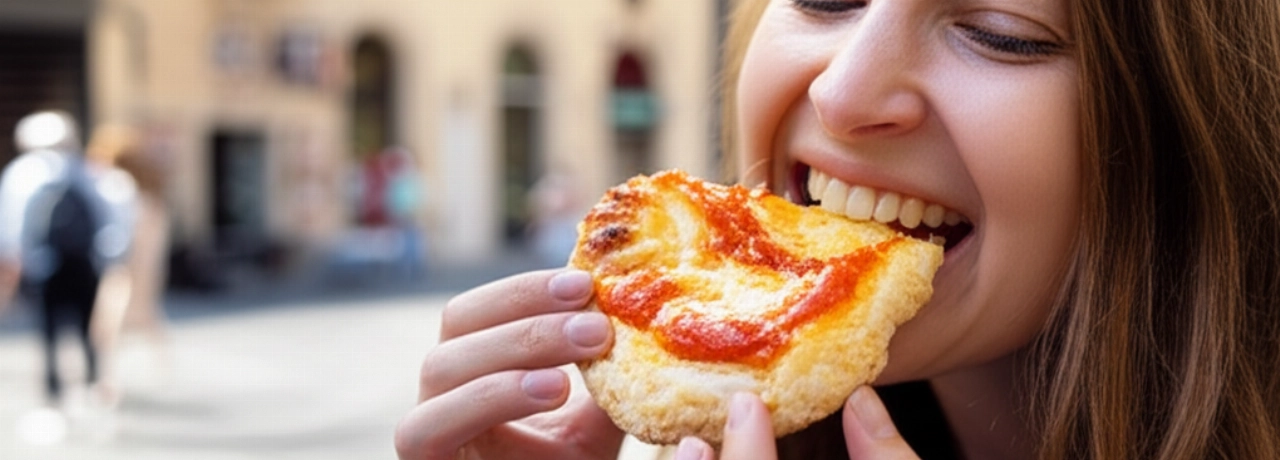
The 3 Mistakes That Make Montanara Heavy (and How to Avoid Them)
Preparing a light and fragrant Montanara is not difficult, but there are some pitfalls that can ruin the result. Here are the secrets to avoiding them, the result of years of experience and "trial and error" that I'm happy to spare you:
- Under-hydrated or poorly worked dough: A dough that is too stiff or not sufficiently worked will not develop a good gluten network. The result? A rubbery Montanara that doesn't puff up well during cooking and absorbs too much oil. My advice: Work the dough patiently until it is smooth, elastic, and no longer sticks to your hands. Hydration is fundamental: a well-hydrated dough will be lighter.
- Insufficient or excessive leavening: If the dough doesn't rise enough, the Montanara will be compact and heavy. If it rises too much, it risks collapsing during cooking and absorbing oil. My advice: Be patient and respect the times. Leavening is a living process, influenced by temperature. Observe the dough: it should double in volume and show bubbles on the surface. Don't rush!
- Wrong oil temperature: This is the most common and critical mistake. If the oil is too cold, the Montanara will absorb an excessive amount of fat, becoming greasy and indigestible. If it's too hot, it will burn on the outside while remaining raw inside. My advice: Use a kitchen thermometer to ensure the oil is at 170-175°C. If you don't have one, do the toothpick test: dip one into the oil; if many small bubbles form around it, the temperature is right.
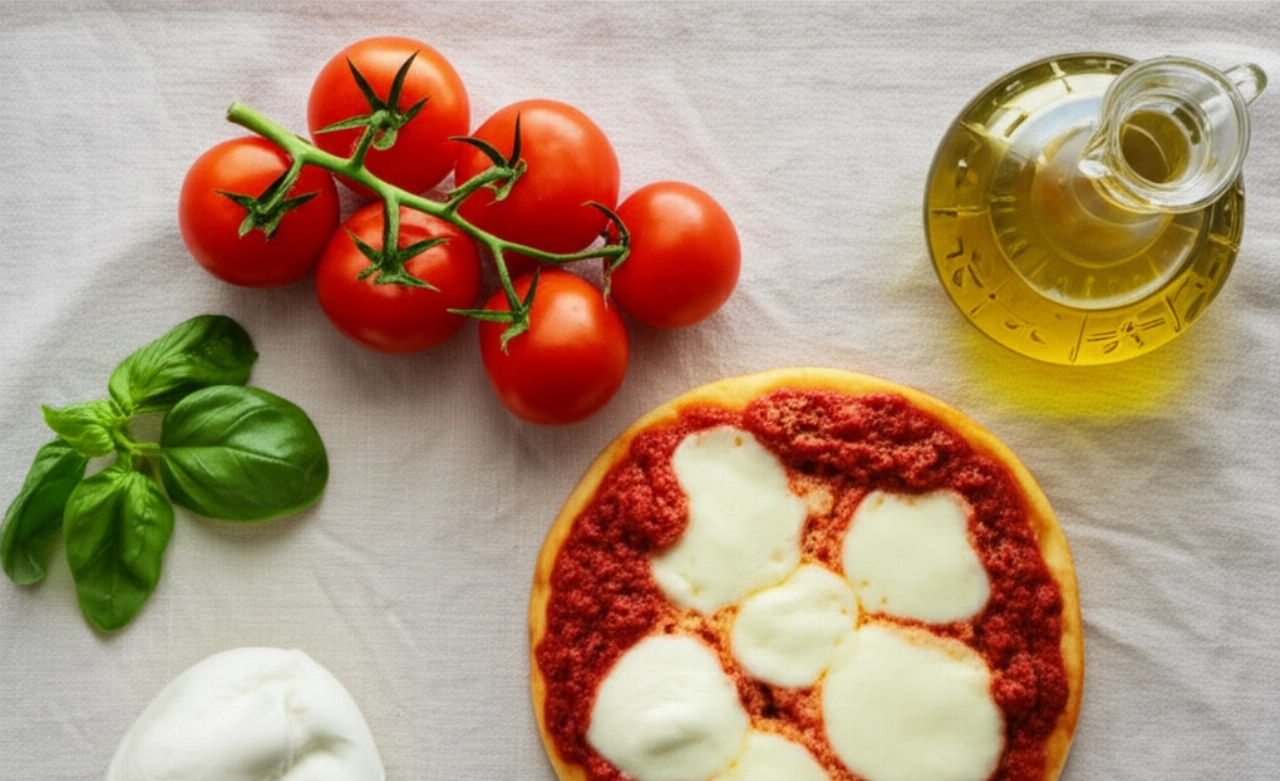
The Secret to Perfect Frying: The Tip Handed Down by Neapolitan Tradition
The true magic of Montanara lies in its lightness, and this depends almost entirely on the frying. True Neapolitan tradition teaches that the oil must be abundant and at the right temperature, neither too hot nor too cold. But there's an extra trick, a small gesture that makes the difference between a good fried pizza and an unforgettable one:
When frying your Montanare, don't just flip them once. As soon as you immerse them in hot oil, you'll see them tend to puff up. With the help of a slotted spoon, "baste" the surface of the Montanara with the hot oil as it fries. This small gesture helps the dough to puff up uniformly, creating those internal air bubbles that make the Montanara so ethereal and light. It's as if you're "massaging" it with heat, ensuring perfect cooking and uniform crispness over the entire surface. And then, the secret to preventing it from becoming greasy? A very quick dab on absorbent paper, but without pressing! They just need to lose the excess oil on the surface, maintaining their fragrance.
Let's Prepare Fried Montanara Together: The Step-by-Step Guide
Now that we know the secrets, let's get to work! I'll guide you step-by-step, with the calm and precision that only experience can provide.
Phase 1: The Dough (The Heart of Montanara)
- In a large bowl (or stand mixer), dissolve the yeast in room temperature water. Mix well to activate it.
- Add the flour a little at a time, mixing with a spoon or the paddle attachment of the stand mixer. When the dough starts to come together, add the salt (away from the yeast!) and extra virgin olive oil.
- Knead the dough vigorously for at least 10-15 minutes by hand, or 8-10 minutes with a stand mixer (using the dough hook). You should obtain a smooth, elastic, and homogeneous dough. It should not stick to your hands.
- Form a ball, lightly grease it with a drizzle of oil, and place it in a large bowl. Cover with plastic wrap or a damp cloth and let it rise in a warm place (about 24-26°C) for at least 2-3 hours, or until it has doubled in volume. Times may vary depending on room temperature.
Phase 2: Shaping and Second Leavening
- Once risen, gently turn the dough out onto a lightly floured surface. Don't deflate it too much!
- Divide the dough into balls of about 50-60 grams each. You can use a scale to be precise.
- Form small, smooth balls and arrange them on a floured tray, spaced apart.
- Cover again with plastic wrap or a cloth and let them rise for another hour, or until they are visibly puffed and light. This step is crucial for the final lightness.
Phase 3: Perfect Frying
- While the balls are rising, prepare the topping: cut the mozzarella into cubes and let it drain well. Prepare the tomato passata (you can gently warm it with a drizzle of oil and a pinch of salt, but don't cook it too much).
- In a high-sided pan or deep fryer, pour in abundant peanut oil. There should be enough oil to completely cover the Montanare.
- Heat the oil until it reaches the ideal temperature of 170-175°C. Use a thermometer if you have one, otherwise do the toothpick test.
- When the oil is ready, gently take a ball of dough and, with lightly oiled or floured hands, gently stretch it from the center outwards, forming a disc about 10-12 cm in diameter. Do not flatten the edges; they should remain slightly thicker.
- Immerse the Montanara in the hot oil. Fry one or two at a time, so as not to lower the oil temperature too much.
- While it fries, "baste" the surface with hot oil using the slotted spoon. You'll see it puff up like a cloud!
- When it's golden and puffed on both sides (it will take about 1-2 minutes per side), drain it with the slotted spoon and place it on a plate lined with absorbent paper for an instant, just to remove excess oil.
Phase 4: Topping and Serving
- Immediately after frying and draining, top the Montanara immediately. This is when the dough is most receptive to flavors.
- Spread a tablespoon of tomato passata on the surface, add a few mozzarella cubes and a fresh basil leaf.
- Serve your Montanare immediately, hot and fragrant. This is when they are at their best!
Tips and Frequently Asked Questions about Fried Montanara
I understand you might still have some doubts. Here are the answers to the most common questions, to put your mind at ease:
- Can I prepare the dough in advance?
- Absolutely yes! You can prepare the dough the day before and let it rise slowly in the refrigerator for 12-24 hours. In this case, use less yeast (about 2-3 grams). Remember to take it out of the fridge at least an hour before forming the balls, to let it return to room temperature.
- What is the best oil for frying?
- As I already mentioned, peanut oil is the best for frying. It has a high smoke point and a neutral flavor that doesn't overpower the Montanara. Alternatively, you can use high-oleic sunflower oil.
- Why is my Montanara rubbery or greasy?
- If it's rubbery, the dough probably didn't rise enough or wasn't worked sufficiently. If it's greasy, almost certainly the oil temperature was incorrect (too low) or you didn't drain it well. Remember: hot and abundant oil, and a quick dab on absorbent paper.
- Can I use other toppings?
- Certainly! The classic version is with tomato, mozzarella, and basil, but you can let your imagination run wild. Try it with ricotta and pepper, or with a sausage sauce, or even a sweet version with Nutella! The important thing is that the topping is ready and added immediately after frying.
- Can I freeze Montanare?
- Yes, but I recommend freezing them already fried and topped. Once cold, arrange them on a tray and put them in the freezer. Once frozen, transfer them to a food bag. To thaw them, you can put them in a hot oven for a few minutes or in the microwave, but the best result is obtained by frying them again for a few moments.
There you have it! Now you don't just have a recipe, but all the secrets to bringing a dish to the table that tastes of home, tradition, and love. Fried Montanara is an explosion of flavors and textures, a true Neapolitan embrace that will win everyone over.
Don't be afraid to experiment. Cooking is an act of creativity, and with this solid foundation, you'll see that applause won't be lacking. Every Montanara you prepare will be a small masterpiece, light and fragrant, just as tradition dictates.
Have you tried our recipe? We're very curious to see your masterpiece! Leave a comment below, tell us how it went, or share a photo on Instagram by tagging @CercaRicette.it. If you loved this Montanara, you can't miss our recipe for Authentic Neapolitan Pizza Dough or for another street food classic like Apulian Panzerotti. Until next time, and bon appétit!
